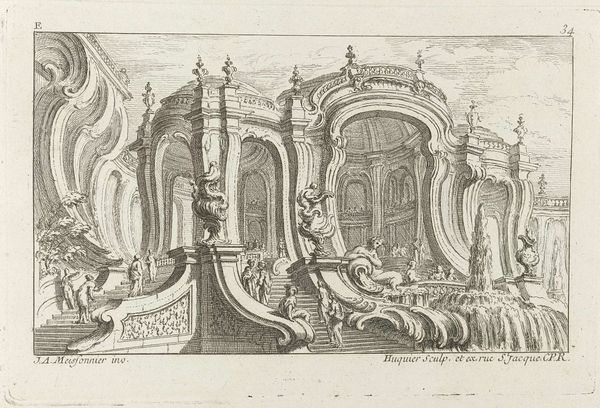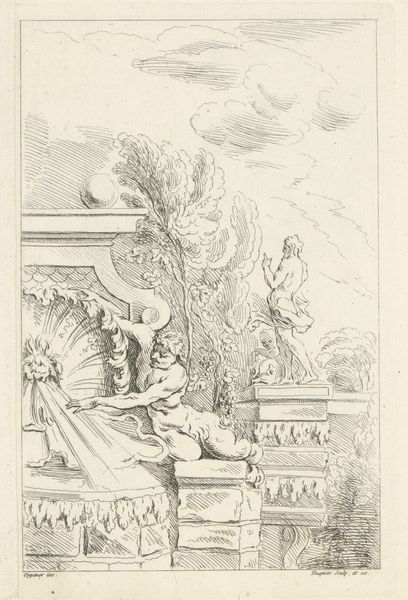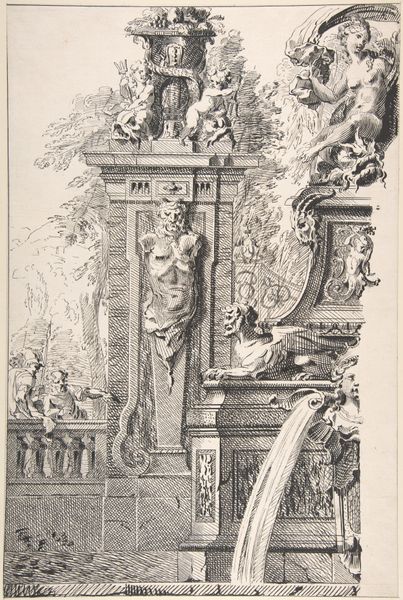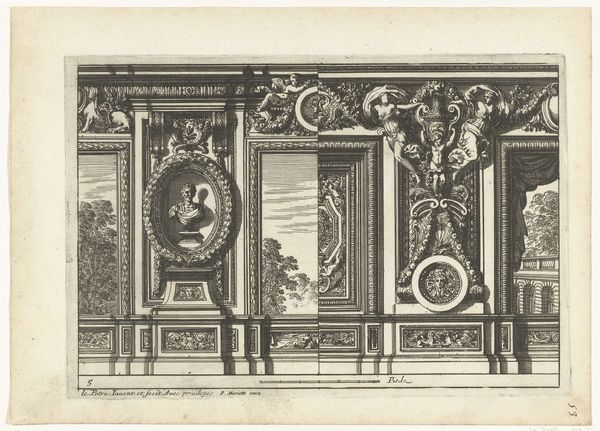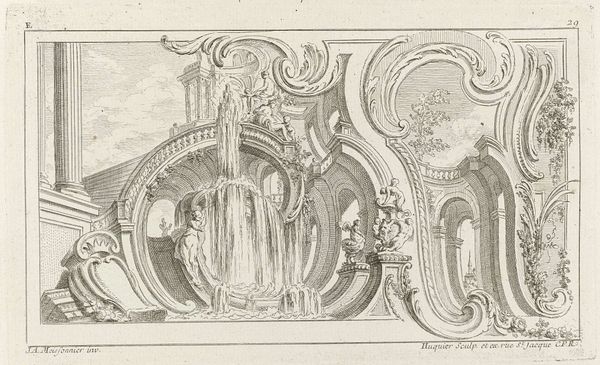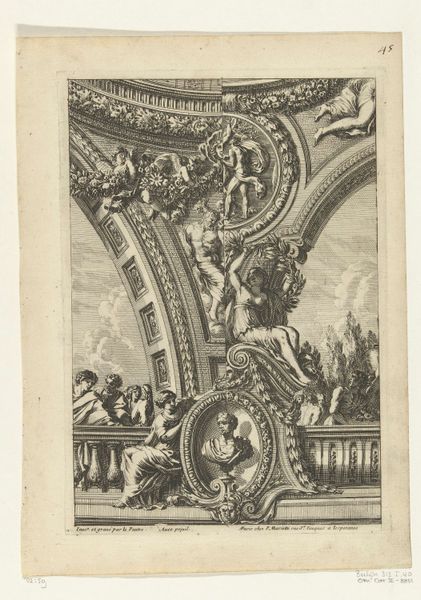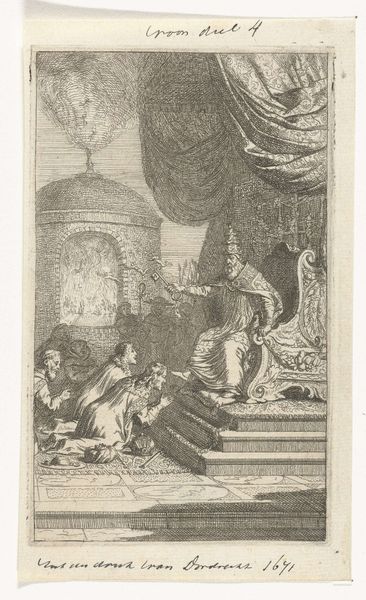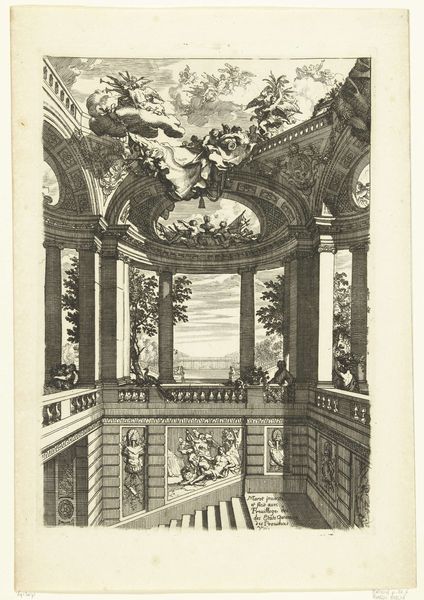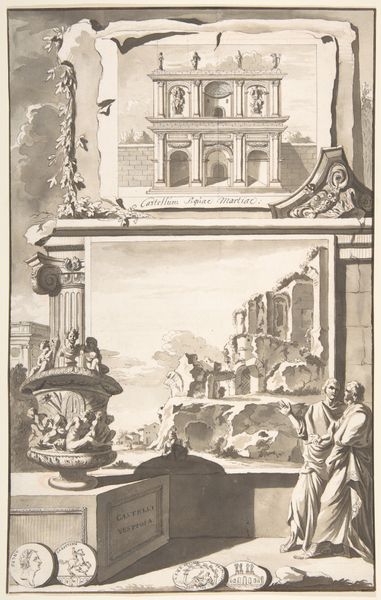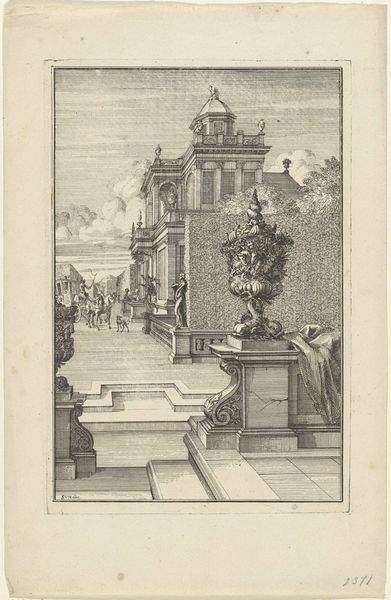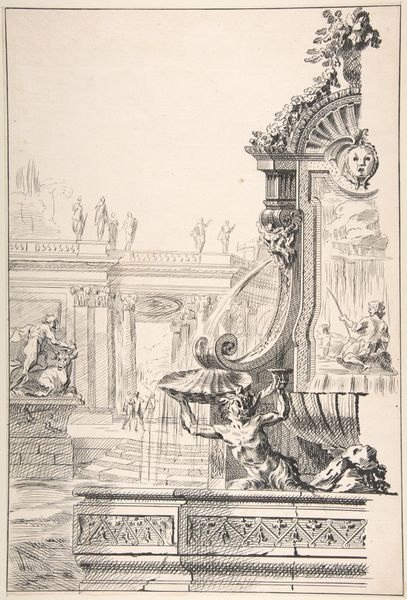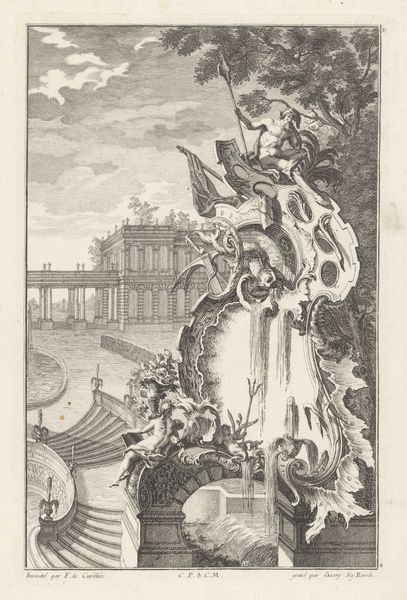
Ornament met architectuur met rocaille elementen en figuren 1738 - 1749
0:00
0:00
print, engraving, architecture
#
baroque
# print
#
pen illustration
#
pen sketch
#
figuration
#
line
#
history-painting
#
engraving
#
architecture
Dimensions: height 126 mm, width 225 mm
Copyright: Rijks Museum: Open Domain
Curator: What a marvelously theatrical print! It’s titled “Ornament met architectuur met rocaille elementen en figuren,” created between 1738 and 1749 by Gabriel Huquier. It resides here at the Rijksmuseum. Editor: The scale and ornamentation strike me immediately; the visual depth here is astounding for an engraving! The figures almost seem secondary to the elaborate architectural forms. Curator: Indeed, prints like this one served as design prototypes. This image speaks volumes about the aspirational aesthetics of the burgeoning bourgeoisie during the Rococo period. Notice how classical motifs are reinterpreted through a distinctly French lens. Editor: You’re right. The figures feel almost staged amidst all that architectural bravado. The play of line and shadow gives the composition incredible depth, almost a hyper-reality. And look at the lines defining those cloud forms! Curator: This print really reflects the political undercurrents. The aristocracy heavily promoted French taste to enhance their political dominance through material culture and control the decorative arts! The market for these decorative prints was huge. Editor: The engraver certainly knew his craft, mastering the art of contrast to mimic three dimensions. It makes one consider the social stratification involved with such luxury prints versus something ephemeral like street advertising. Curator: Absolutely. A print like this wouldn’t just be aesthetic—it becomes a tangible signifier of class, of refined taste, carefully circulated among a select segment of society. Think about the institutions supporting and showcasing artists like Huquier. Editor: It really exemplifies how even seemingly decorative works could be read as signs of political and social hierarchies during the time. Looking at it from a formal aspect shows how intricate the image itself is, even detached from all social meanings. Curator: It reveals the very material ambitions of that period. I find myself reassessing prints from the era as tangible commodities rather than simply aesthetic objects, which has shifted my views somewhat. Editor: It definitely challenges my initial notion of aesthetic purity! But maybe, at least to some degree, that intricate technique speaks beyond the limitations of social hierarchy itself.
Comments
No comments
Be the first to comment and join the conversation on the ultimate creative platform.
